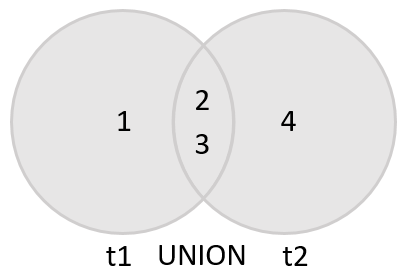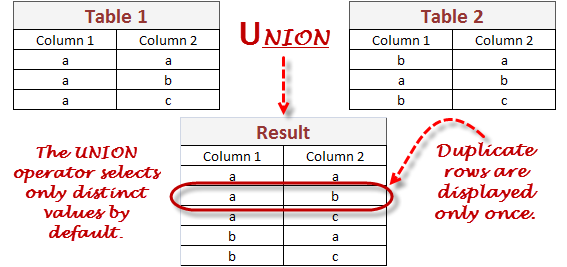Winner of Best BI Software for SQL. Move Forward With Confidence. Get the Most out of Your Data. Watch the Free Tableau Video Demo! How to join queries in SQL?

APPLIES TO: SQL Server Azure SQL Database Azure Synapse Analytics ( SQL DW) Parallel Data Warehouse. Concatenates the of two queries into a single result set. You control whether the result set includes duplicate rows: UNION ALL - Includes duplicates. Is it possible to select from the result of a union ? WHERE statement after a UNION in SQL?
SELECT from an UNION ALL in SQL. As you will see the final ets will differ, but there is some interesting info on how SQL Server actually completes the process. SQL UNION Examples ProbleList all contacts, i. Union in SQL will select all the distinct records from all queries. If you want duplicates (i.e all rows from both tables) you need a UNION ALL.
Create a union query by creating and combining select queries. Even though you can create a union query by directly writing the SQL syntax in the SQL view, you might find it easier to build it in parts with select queries. Introduction to SQL Server UNION.
Combine Table Rows Using UNION. In this lesson we are going to talk about the UNION clause. You can use the UNION clause to combine table rows from two different queries into one result.

Unlike a join, which combines columns from different tables, a union combines rows from different tables. The fields to be used in both the select statements must be in same order, same number and same data type. The Union clause produces distinct values in the result. The following illustrates the syntax of the UNION. What if we wanted to make one table from all the content in the BOOKS and MOVIES tables?
This is a perfect time to use UNION operator. The ORDER BY clause with UNION arrange the rows in the result set in a specific order. The default order is ascending.
A subquery is a SQL query within a query. Subqueries are nested queries that provide data to the enclosing query. Connecting With The Data Community. All the statements concatenated with UNION must have the same structure. SQL joins allow you to combine two datasets side-by-side, but UNION allows you to stack one dataset on top of the other.
The DISTINCT clause is used to eliminate duplicate values from the UNION query result set. Welcome to the third part of SQL Injection. In this tutorial we will learn how to inject Union based injection.

In our last tutorial we learnt how to find out the number of columns used under the query so that we can use Union select statement. To identify which subselect each row is from, you can include a constant at the end of the select list of each subselect in the union. When SQL returns your , the last column contains the constant for the subselect that is the source of that row.
Nincsenek megjegyzések:
Megjegyzés küldése
Megjegyzés: Megjegyzéseket csak a blog tagjai írhatnak a blogba.